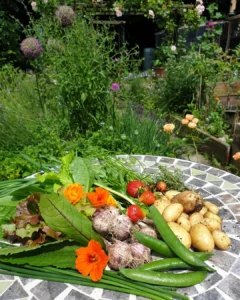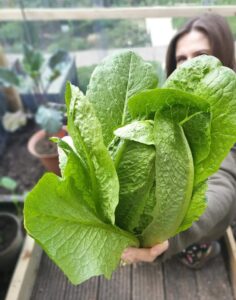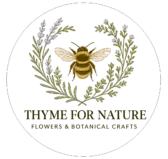Join me this year in Growing Wildlife-Friendly Fruit & Veg ! 

If you’d love to grow fruits and vegetables not only to harvest and eat fresh, tasty food and improve your well-being but also to help protect and nurture wildlife then please join me this year in Growing Wildlife-Friendly Fruit & Veg. Many fruits and vegetables have flowers that are fantastic for pollinators and many need pollinators to produce food. So growing fruit & veg is a great way to provide essential nectar for pollinators in your garden.
I’m not an expert gardener by any means, I just love gardening, growing food and nature and although I grow food to nourish my well-being I am passionate about growing it in a way that nurtures nature too.
Wildlife friendly fruit and vegetable growing means growing food in a way that doesn’t harm any wildlife, including ‘pests’ like slugs and snails.
The main principles I use to grow fruits and vegetables in a wildlife friendly way are:
– Grow enough food for both yourself and wildlife to enjoy
– Avoid the use of chemical pesticides, they’re extremely detrimental for wildlife.
– Encourage natural predators of ‘pests’ into your garden with more wildlife friendly areas such as ponds and bug hotels.
– When you find ‘pests’ on your food relocate them to another part of your garden, a compost bin is ideal.
– Let some of your vegetables flower and go to seed. Not only will this be beneficial for pollinators but you can collect more seeds to grow !
– Don’t give up ! I’ve had lots of wonderful successes with growing food organically but I’ve also had failures too, just keep trying, it’s worth it in the end !

As we go through the year I will share how, when and what I’m growing in my garden and also more information on the above principles.
Now is a great time to start sowing seeds. If you’re new to growing vegetables, good ones to start with are lettuce, other salad leaves and tomatoes. I would highly recommend using mini propagators – not only do they help with germination by keeping seeds warm and damp; they also protect young seedlings from slugs and snails. I quite often save and re-use the plastic containers that fruit like strawberries come in; they make great little propagators to plant seeds in. If they don’t already have them, I make a few drainage holes in the bottom of the container so that the seeds don’t get water logged. Now is also a good time to chit early potatoes if you want to grow them. Place the seed potatoes in trays in a dry room or greenhouse with plenty of light to encourage them to sprout before planting them out in March/April. Don’t worry if you don’t get round to sowing anything straight away, most seeds can be sown in a greenhouse anytime from now on and many can be sown directly outdoors in May/June. The seed packets will have individual instructions to follow. You can read more about growing wildlife-friendly fruit and veg on my Facebook and Instagram pages.

